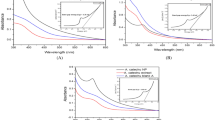Abstract
Tianhuafen is a kind of traditional Chinese medicine for abortion, which has long been used in China. The basic protein trichosanthin (TCS) is responsible for such activity. As a ribosome inactivating protein (RIP), trichosanthin removes A4304 in the 28s rRNA via the Nglycosidase activtty and inactivates the ribosome. However, it remains unclear how TCS can enter the cytoplasm. In the experiment, monolayers at air/water interface have been used to study the interaction between TCS and phospholipid membrane. The results show that TCS can penetrate negatively charged phospholipid monolayer under acid condition, and its membrane penetrating ability is obviously pH-dependent. A hypothesis of TCS penetrating biological membrane under acid condition is proposed based on the obtained result.
Similar content being viewed by others
References
Law, L., Tam, P.P.L., Yeung, H. W., Effrcts of a-momorchocin on the development of pen-implantation mouse embryos,J. Reprod. Fert., 1983, 69: 597.
Wang, Y., Qian, R. Q., Gu, Z. W.et al., Scientific evaluaticm of Tian Hua Fen (THF) history. chemistry and application.Pure Appl. Chem., 1986, 58: 789.
Zhou, K., Fu, Z., Wang, Y., Structure of trichosanthin at 1.88Å resolution,Protein Struct. Funct. Genet., 1994, 19: 4.
Zhang, J. S., Liu, W. Y., The mechanism of action of trichosanthin on eukaryotic ribosomes-RNA N-glycosidaae activity of the cytotoxin,Nucl. Acidc Re., 1992, 20: 1271.
Wu, S., Lu, X. H., Zhu, Y. R.et al., N-glyconidase mechanism of trichosanthin,Science in China, Ser. C, 1998, 41: 174.
Zhang, Y., Li, W. L., Hao, Q.et al., Tb (III) and Eu (III) as fluorescent probes to investigate the metal-binding sites of trichosanthin,Biochem. Biophys. Res. Commu., 1993, 197(2): 407.
Demel, R. A., Monolayers-description of use and interaction,Methodc Enzymol, 1974, 32: 539.
Han, X. H., Sui, S. F., Yang, F. Y., A mini-trough for the study of membrane insertion ability of proteins,Thin Solid Film, 1996, 284–285: 789.
Wang, S. X., Cai, G. P., Sui, S. F., The insertion of human apolipopmtein H into phospholipid mmbranes: a monolayer study,Biochcm. J., 1998, 335: 225.
Demel, R. A., London, Y., Geurts Van Kessel, W. S. M.et al., The specific interaction of myelin basic protein with lipids at the air-water interface,Biochim. Biophys. Acta, 1973, 311: 507.
Demel, R. A., Geurts Van, Kesse, W. S. M., Zwaal, R. F. A.et al., Relation between various phospholipaee actions on human red cell membranes and the interfacial phospholipid pressure in monolayers,Biochim. Biophys. Acta, 1975, 406: 97.
Blewitt, M. G., Chung, L. A., London, E., Effect of pH on the conformation of diphtheria toxin and its implication for membrane penetration,Biochemistry, 1985, 24: 5458.
Ferion, M., Schlesingcr, P., Brooks, R. M.et al., Defective acidification of endosnmes in Chinese hamster ovary cell mutants “cross-resistant” to toxins and virus,Proc. Nat1. Acad. Sci. USA, 1983, 80: 5315.
Author information
Authors and Affiliations
About this article
Cite this article
Xia, X., Wang, S., Luo, J. et al. Trichosanthin can spontaneously penetrate phospholipid monolayer under acid condition. Chin. Sci. Bull. 44, 1892–1895 (1999). https://doi.org/10.1007/BF02886348
Received:
Issue Date:
DOI: https://doi.org/10.1007/BF02886348




